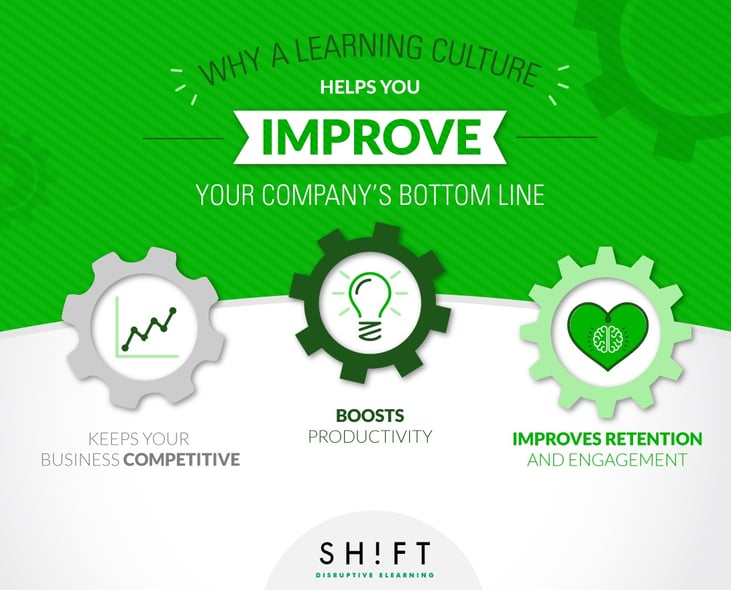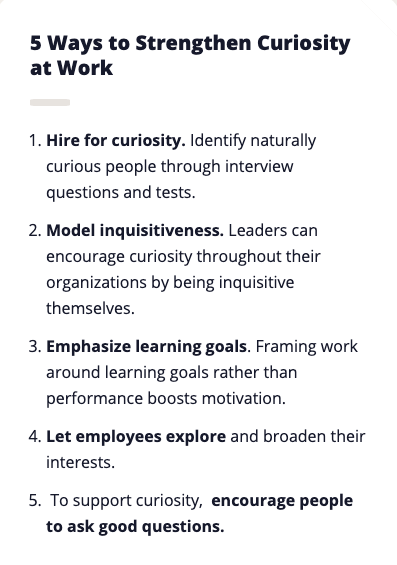Did you know that a learning culture in your organization encourages employees to develop knowledge and competence?
This is important for individual evolution, but it is also important for the growth of a company as a whole.
Employers such as KPMG, Deloitte, Union Bank and Eco Bank make learning an integral part of their talent management systems because for learning to be effective in an organization, the knowledge that is encouraged must be related to the business.
According to this Bersin article; “The single biggest driver of business impact is the strength of an organization’s learning culture.”
More so, individuals should be working together rather than learning individually. Shared learning can help more companies in Nigeria improve their staff quicker and solves problems more efficiently.

The Advantages of a Learning Culture
There are many benefits of a cultivated learning culture in an organisation. These include, but are not limited to:
- Increased efficiency, productivity and profit
- Increased employee satisfaction and decreased turnover
- An improvement mind-set among employees
- A developed sense of ownership and accountability
- A culture of knowledge inquiry and sharing
- An enhanced ability for workers to adapt to change
How to Create a Learning Culture in Your Organization
According to Deloitte, companies with continuous learning cultures are 46% more likely to be first to market and 58% more prepared to meet future demand. Plus, they also have a 26% greater ability to deliver quality products and they experience 37% greater employee productivity. So if you want to foster a learning culture at your business, here are four ways to do so.
1. Give Meaningful and Constructive Feedback
To create a culture of learning, you have to learn to give constructive feedback.
Some employers tend to give positive feedback and hold back the negative because they might be wary of hurting someone’s feelings or getting their authority questioned.
You might think that giving them only positive feedback will inspire them to overcome their shortcomings, but that is far from the truth.
When you only tell them the positive, your employees don’t know they need improvement and thus can’t reach their full potential.
On the other hand, some employers only give negative feedback and never acknowledge when a good job is done.
This only makes your employees feel overlooked and unappreciated.
Constructive feedback is a blend of both positive and negative feedback. To master this, you need to learn how to have difficult conversations.
2. Lead by Example
“The three most important ways to lead people are:… by example… by example… by example.” ~ Albert Schweitzer
Your employees are constantly watching you.
Your behaviour is strongly reflected on the behaviour and performance of your team.
To nurture your team’s curiosity and unlock learning in your organization, you have to first practice what you preach.
For example, if you want your team to read more, then read – and make them aware of your voracious reading habits. You can also share lessons you have learnt from your favourite books.
3. Hire Curious People
To avoid stagnancy and build a company that is agile and fast thinking, it is very important to hire curious people.
Naturally, curious people want to learn and how to do things better. This usually works to improve the company as a whole.
When you hire people who are naturally curious, and maximise the fit between their interests and the role they are in, you will not have to worry so much about their willingness to learn or be on their case to unlock their curiosity.
To hire curious people, you have to pay close attention to applicants during the selection stage in the employment process, rather than focusing on training and development.
Good selection makes training and development much more effective because it is easier to augment potential than to go against someone’s nature.

4. Reward Continuous Learning
Recognition is important.
Employees want to be acknowledged for the time they have invested in learning. We recommend having company-wide initiatives that reward your team members for their hard work.
These can be small—such as a “shout out” about how well someone has performed in an email or in a meeting; or it can be larger and more motivating, like a prize for the employee with the most courses completed over a six month period.
Rewarding employee shows them that you value the work they put into learning. It is impossible to trigger deliberate changes in your company’s learning culture unless you put in place formal reward systems to entice them.
Note that rewarding curiosity is not just about praising and promoting those who display an effort to learn and develop. It is also about creating a climate that nurtures critical thinking, where challenging authority and speaking up are encouraged, even if it means creating discord. This is particularly important if you want your team to produce something innovative.
Conclusion
Your brand as a whole, as well as every person in it, has unrealised ability.
The most effective way to cultivate that potential is through building a transformative culture of learning.
To take your company to new heights and develop employees, create a learning culture by giving constructive feedback, leading by example, hiring curious people and rewarding continuous learning.
We hope this helps.





